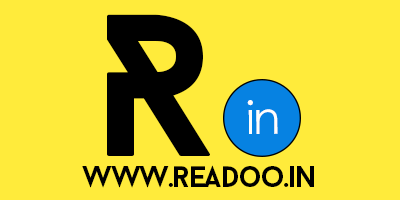The Indian National Congress on its official Twitter handle today hosted a poll in its famous (infamous) #KnowYourLegacy hashtag. Today’s question is
In which International War did Gandhiji fight as a 'Sergeant Major'? #KnowYourLegacy
— Congress (@INCIndia) October 4, 2017
However, Congress again got a lot of facts wrong in its questionnaire.
1. Gandhi was not involved in the war directly.
Gandhi was assisting the British army with their injured soldiers. M.K. Gandhi who was working as a lawyer for the Muslim Indian traders in Natal, South Africa back then led a team of 1100 men called The Natal Indian Ambulance Corps. The task of this team was to take the wounded brought by the Natal Volunteer Ambulance Corps from the battlefield and carry them to the railhead So they were practically not on the frontline.
2. Gandhi served for the British:
Mahatma Gandhi and his Natal Indian Ambulance corps carried the injured British soldiers to hospitals. The Indians in the Boer war were sent in as Auxiliaries and not as combat soldiers. The initial force sent from India – according to a telegram of August 30, 1899, from the Viceroy to the Secretary of State for India, was composed of 5,635 British officers and men, 1,078 “natives” (Indians), 2,334 horses, and 611 mules and ponies. A majority of Indians were assigned to field hospitals or used as stretcher-bearers; the remaining were transport drivers, grooms to break in and train horses and private servants.
The force brought with it three complete field hospitals for the British troops from India, and one hospital for the Indians. The personnel of the hospitals were mostly Indian. They included ward orderlies, water carriers, cooks and sweepers, as well as doctors, including perhaps some from the Indian Medical Service.
By the end of the war, nearly ten thousand Indians were sent to South Africa as “auxiliaries”. They included syces or grooms for the horses, water carriers, washermen, smiths, carpenters, cooks, butchers, bakers, sweepers, and servants of officers, as well as doctors, ambulance workers and stretcher bearers. Indians manned field hospitals and two veterinary establishments.
India sent nearly 7,000 horses, as well as ponies and mules. It promptly provided various supplies helmets, blankets, coats, tents etc., – as needed. Some Indian princes, merchants and others, seeking to show loyalty to the British, offered horses, grooms and money.
More than a thousand Indian auxiliaries were in Ladysmith during the siege. The role of the Indian Ordnance Field Park during that siege was particularly noteworthy.
The Indian auxiliaries worked under fire during many battles. A large number were apparently killed or wounded in action, but no official figures were published.
At the end of the war, the Indian community in South Africa contributed funds to erect a memorial for the troops from India. THE MAJORITY OF THESE SUPPLIES AND MEN WERE SENT BY INDIAN KINGS WHO WANTED TO SHOW THEIR LOYALTY TO THE BRITISH EMPIRE.
3. Gandhi was not Anti-British:
An article on Gandhi’s stand on the Boer war reads he was not anti-British Empire and had the faith over the British Constitution and empire. In his views, the empire was not responsible for the individual problems of the colonies whose vast conglomeration was under the Government in London. In his view, it was the local problems. He supported the British in the war. The British took over 25,000 Boer prisoners of war and shipped them to other colonies, while confining civilians, including women and children, in concentration camps in South Africa. At the end of the war in 1902, 9,125 of the Boer prisoners of war, including some foreign volunteers, were in about twenty cantonments all over India. This was the largest number in any colony
4. Congress Made Gandhi MAHATMA
The Congress made Gandhi Mahatma, while he was actually perpetuating his double standards. The history books that we read today strongly advocate that MK Gandhi followed the path of Ahimsa and was a firm believer of nonviolence. But over the span of his life, we can see numerous examples of these kinds where he actually supported violence and was actively or passively involved in it.
5. KNOW YOUR LEGACY! Really? :
Boer war was an inhuman and sadistic war which witnessed the death of native Africans in the hands of British, and the one in which innocent people were either killed or taken hostage of in their fight for their rights in their homeland. How can supporting such oppression be called legacy? Isn’t it the same way we call the people who partitioned India Mahatmas and Chachas!
Read: The Story Of The World’s Most Brutal Battle – “The Battle Of Rezang La”
There may be questions and differences of opinions we have on various aspects of politics. But when it comes to national integrity we have to be double sure and ethical about what we call someone. That too “A father of the nation” shouldn’t be someone who was constantly backstabbing the national interest all the time









